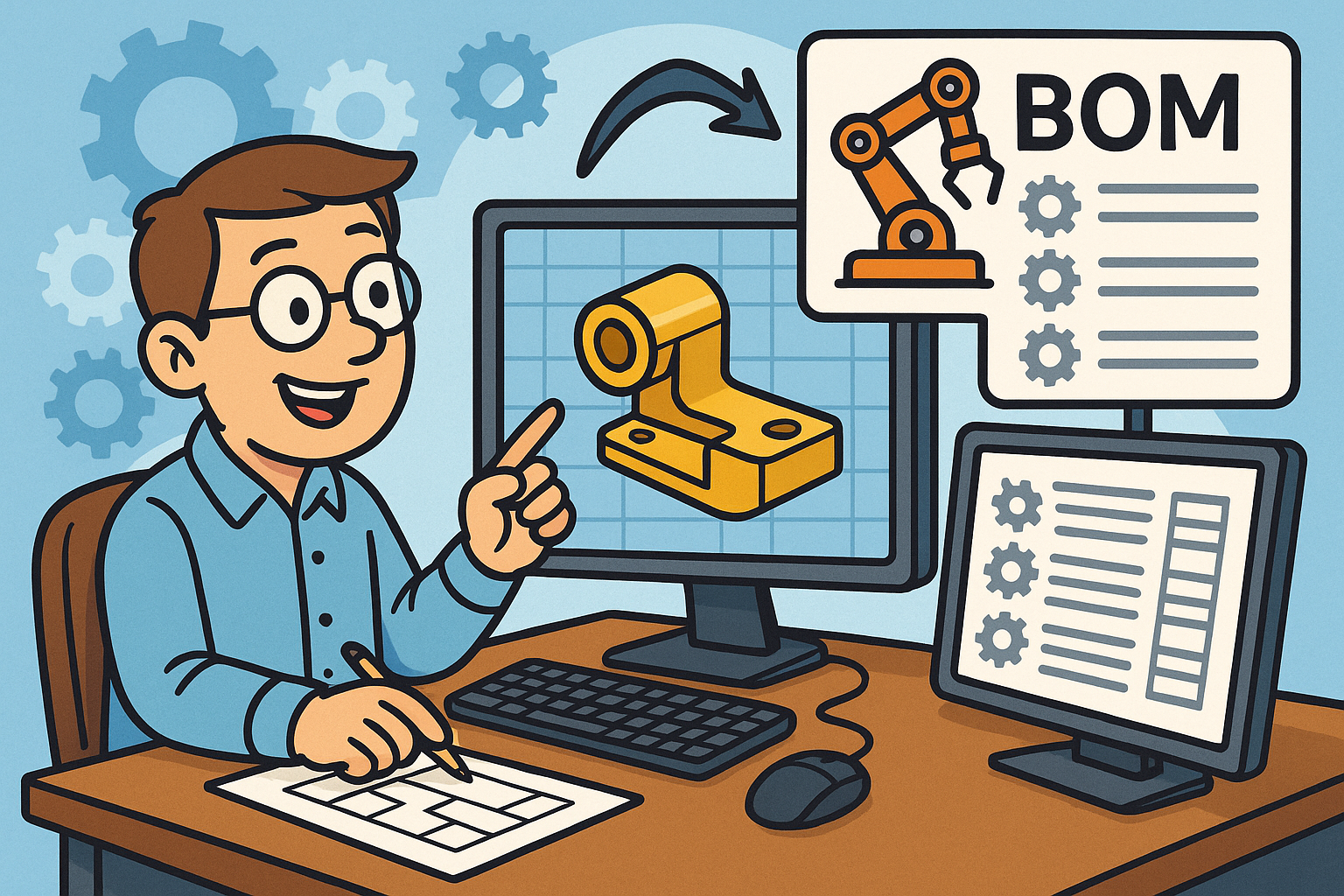Your Cart is Empty
Customer Testimonials
-
"Great customer service. The folks at Novedge were super helpful in navigating a somewhat complicated order including software upgrades and serial numbers in various stages of inactivity. They were friendly and helpful throughout the process.."
Ruben Ruckmark
"Quick & very helpful. We have been using Novedge for years and are very happy with their quick service when we need to make a purchase and excellent support resolving any issues."
Will Woodson
"Scott is the best. He reminds me about subscriptions dates, guides me in the correct direction for updates. He always responds promptly to me. He is literally the reason I continue to work with Novedge and will do so in the future."
Edward Mchugh
"Calvin Lok is “the man”. After my purchase of Sketchup 2021, he called me and provided step-by-step instructions to ease me through difficulties I was having with the setup of my new software."
Mike Borzage
Design Software History: The Evolution of Geometric Modeling: From Traditional Drafting to Advanced Digital Design Techniques
August 28, 2025 9 min read


Introduction and Historical Context
Early Developments and the Birth of Digital Geometric Modeling
The evolution of geometric modeling has been central to the transformation of design software, marking a significant departure from traditional drafting practices towards a digital future. In the early days of computational design, engineers and designers began to explore the potential of computers to facilitate the creation of mathematical models that represented physical objects. Initially, techniques such as wireframe rendering and simple vector representations laid the groundwork for a new kind of visualization that could be manipulated, analyzed, and optimized in ways that traditional hand-drawn sketches never could. Prominent institutions and early companies recognized these possibilities, investing substantial time and resources into developing the core algorithms necessary to handle curve and surface definitions. The literature from this period indicates that much of the progress relied on devising robust methods for dealing with curves and surfaces in a numerical context, which ultimately gave rise to standardized forms like B-splines and NURBS. The transition from manual drafting to digital modeling was not only a leap in technology but also a profound change in design philosophy. Designers began to recognize that precision, efficiency, and the ability to simulate physical properties digitally could dramatically improve the workflow. Notable early contributors included visionaries in both academic and industrial settings who laid the theoretical foundations, ensuring that the computational capabilities could match industrial demands.
Transitioning from Traditional Drafting to Digitally Driven Models
As digital tools began to replace traditional drafting methods, the underlying techniques evolved to accommodate increasingly complex designs. During this transformative period, design software began integrating advanced mathematical models to represent curves and surfaces with intricate levels of detail. Several pioneering companies, whose names have become synonymous with digital design innovation, played a key role in this phase. They recognized that the advantages of digital precision, automation, and the ease of editing could be leveraged to create more sophisticated and dynamic models. To illustrate this evolution, consider the following bulleted list that outlines the major factors catalyzing this transformation:
- Increased computational power: The ability of early computers to handle complex calculations allowed for the development of parametric modeling techniques.
- Standardization of mathematical representations: The formalization of mathematical curves such as B-splines and NURBS created a common language for representing digital surfaces.
- Collaboration between academia and industry: Research institutions and innovative companies worked in tandem to push the boundaries of what digital models could achieve.
Evolution of Geometric Modeling Techniques
Advancement in Mathematical Models and the Rise of Parametric Curves
Over the years, the field of geometric modeling has witnessed the development of new mathematical formulations that have drastically enhanced the precision and flexibility of design software. Early models, which relied heavily on rudimentary representations, gradually gave way to advanced methodologies such as B-splines, NURBS, and complex parametric curves. These mathematical entities allowed designers to express smooth and continuous curves and surfaces which could be adjusted dynamically based on computational input. The transition from discrete point representations to parametric curves provided a solid foundation for subsequent breakthroughs in computer graphics, enabling the creation of models that were not only mathematically robust but also visually appealing. This innovative stride was supported by collaborative research ventures and cross-disciplinary studies, which combined elements of mathematics, computer science, and visualization techniques. A detailed review of significant milestones reveals that:
- B-splines: Offered the ability to model continuous curves with controllable parameters, significantly reducing the computational efforts needed for rendering.
- NURBS: Introduced the weight-based manipulation of control points, allowing for precision that could accommodate both simple and highly complex designs.
- Parametric curves: Gave designers the flexibility to modify models in real-time, thereby enhancing iterative design processes and precision engineering.
Milestones in Computer Graphics and Design Workflow Integration
The evolution of geometric modeling techniques was marked not only by theoretical advances but also by practical milestones in computer graphics and software integration. Early CAD systems, which once offered only basic wireframe representations, gradually expanded to include shaded surfaces and real-time rendering capabilities. This progression was pivotal in transforming design workflows, enabling engineers and designers to transition seamlessly from conceptual sketches to photorealistic renderings. The development trajectory of these software systems was influenced by the techniques born from academic research combined with the relentless drive for innovation in industries such as aerospace, automotive, and architecture. With the advent of specialized hardware and rapidly advancing processing power, design software began to incorporate increasingly sophisticated algorithms that allowed for the dynamic manipulation of digital models. The following bulleted list encapsulates some key milestones that defined this era:
- Wireframe to surface modeling: Transitioned the industry from simplistic line drawings to complex visualizations incorporating both form and depth.
- Real-time rendering: Enabled interactive design environments where changes could be visualized instantly, improving iterative methods significantly.
- Seamless integration with simulation tools: Provided designers with a comprehensive toolbox for predicting physical behaviors such as stress and strain.
Impact on Modern Design and Industry Applications
Revolutionizing Product Visualization and Design Processes
The ramifications of advancements in geometric modeling are profoundly evident in the way modern design processes and product visualization have evolved. Historically, physical prototypes and manual drafting limited the scope of design iterations, but with the advent of digital models, the design process experienced a radical transformation. Companies increasingly incorporated sophisticated software systems that supported real-time rendering, dynamic adjustments, and precise simulations. This revolution has significantly influenced not only product design but also the broader spectrum of industrial applications, including architecture, aerospace, and automotive industries. The paradigm shift enabled designers to achieve higher levels of precision and functionality while maintaining aesthetic quality. The benefits of this transformation include enhanced collaborative workflows, reduced prototyping costs, and an overall increase in productivity. The revitalized design process leveraged the capability to create virtual prototypes that could be manipulated without the physical constraints associated with traditional manufacturing processes. Some fundamental advantages that emerged from this transition include:
- Enhanced Visualization Capabilities: Digital models allowed for intricate details to be visualized at various scales, thereby improving design decision-making.
- Reduced Development Time: Iterative adjustments and rapid prototyping in a virtual environment compressed development cycles significantly.
- Improved Communication: Internally and externally, stakeholders could now view comprehensive models that articulated design intent more clearly and accurately.
Integrating Geometric Modeling with Emerging Manufacturing and Prototyping Technologies
The impact of advanced geometric modeling extends far beyond the realms of product visualization and design refinement; it has catalyzed significant shifts in the methods employed for manufacturing and prototyping. As industries increasingly adopt additive manufacturing and virtual prototyping, the role of digital models has become more pronounced and indispensable. The transition from traditional subtractive methods to additive manufacturing, for instance, relies heavily on the accuracy and detail provided by modern geometric algorithms. As products become more complex and multifunctional, the capacity to simulate various physical properties such as stress distribution and thermal conductivity within a digital environment has become a vital asset. This integration is supported by software platforms that facilitate seamless transitions from design to production, enabling manufacturers to quickly iterate on designs while simultaneously reducing waste and improving efficiency. The interplay between digital design and physical realization can be underscored by several key points:
- Adoption of additive manufacturing: The precision inherent in advanced modeling allows for the creation of intricate, high-fidelity structures that would be challenging to produce by conventional methods.
- Virtual prototyping: Enhanced simulation tools allow stakeholders to evaluate the performance and ergonomics of designs before physically committing to production.
- Synergistic software ecosystems: Integration of advanced modeling with simulation and diagnostic tools creates a comprehensive design-to-production workflow that significantly improves both quality and speed.
Conclusion and Future Perspectives
Reflecting on the Transformative Journey of Geometric Modeling
In conclusion, the historical evolution and continuous refinement of geometric modeling techniques have demonstrably revolutionized the entire spectrum of design software. By tracing the advancements from early wireframe representations to the complex mathematical models of today, it is evident that each step in the evolution contributed significantly to the modern landscape. The journey from traditional drafting to sophisticated digital modeling is marked by the contributions of pioneering researchers, innovative companies, and an ever-growing body of academic knowledge. The impact of these developments is visible not only in the precision and flexibility afforded to designers but also in the efficiency gains realized through enhanced design processes. As design software continues to evolve, the rich legacy of geometric modeling stands as a testament to human ingenuity in combining mathematical rigor with creative problem-solving. Key points to consider include:
- Historical significance: The transition from traditional methods to digital modeling was a pivotal moment in design history.
- Technological breakthroughs: Advanced mathematical models such as NURBS and B-splines directly influenced the capabilities of modern design software.
- Ongoing innovation: The field continues to evolve, with trends towards integrating artificial intelligence and advanced computational methods promising to redefine the future of design.
Future Trajectory and Integration of Advanced Technologies
Looking forward, the trajectory of geometric modeling is inextricably linked to the continued integration of advanced technologies such as artificial intelligence and real-time computation. The innovations emerging today are fueling a convergence of methodologies that transform mere digital representations into intelligent, adaptive, and highly responsive systems. The future of design software appears to be one where not only are models created with high fidelity, but they are also capable of learning from historical data, predicting design outcomes, and self-optimizing based on project requirements. This evolution is set to further streamline the design process, enabling faster prototyping cycles and enhanced customization. In addition, the infusion of AI into these systems could potentially automate many aspects of the design process, reducing human error and elevating efficiency to new heights. The following aspects highlight the integrative potential of future design technologies:
- AI-driven design optimization: Machine learning algorithms can analyze complex design data to suggest improvements and iterate on initial models automatically.
- Enhanced simulation capabilities: Future software is expected to incorporate real-time, predictive simulations which can account for multiple variables simultaneously, reducing the gap between virtual models and real-world performance.
- Interconnected design ecosystems: A more seamless integration between design, simulation, and manufacturing will likely result in holistic workflows that minimize redundancy and maximize innovation.
Also in Design News

Revolutionizing CAD: Automated BOM Generation for Enhanced Precision and Efficiency
August 28, 2025 10 min read
Read More
Cinema 4D Tip: Effective Use of the Morph Tag in Cinema 4D for Smooth Shape Transitions
August 28, 2025 3 min read
Read More
Bluebeam Tip: Enhance Efficiency with Custom Page Templates in Bluebeam Revu
August 28, 2025 2 min read
Read MoreSubscribe
Sign up to get the latest on sales, new releases and more …


